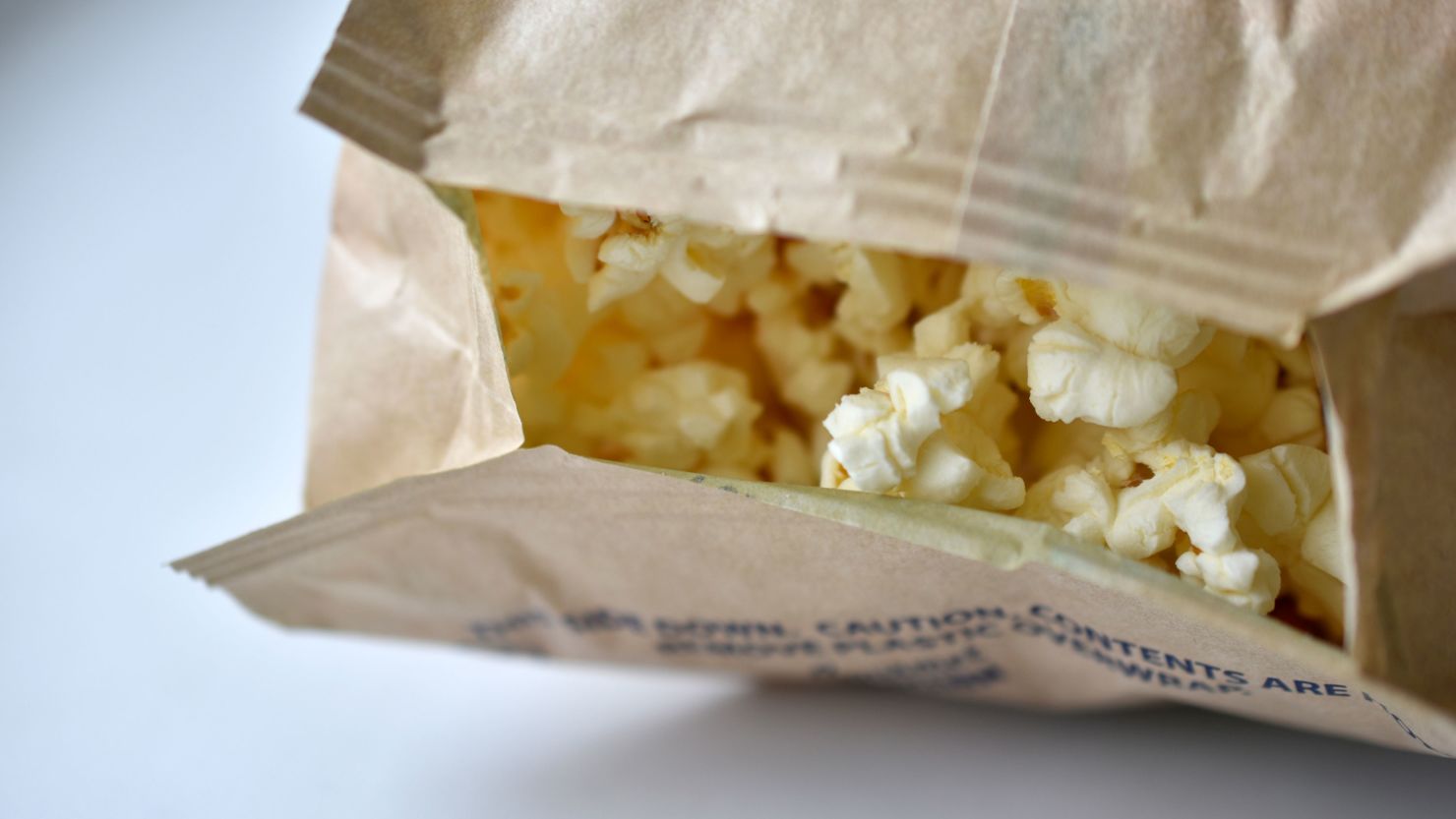
Certain kinds of greaseproofing “forever” chemicals called per- and polyfluoroalkyl substances, or PFAS, will no longer be used in food packaging in the US, the US Food and Drug Administration announced Wednesday.
The FDA’s food studies have shown that food packaging materials like fast-food wrappers, microwave popcorn bags and take-out pizza boxes were a major source of dietary exposure to certain types of PFAS, hormone-disrupting chemicals that may persist in the body and the environment.
PFAS have been linked to a variety of health effects including changes in immune and liver function, obesity, diabetes, certain cancers and lower birth weights.
“I am enthusiastically supportive of getting PFAS out of food packaging,” said Dr. Leonardo Trasande, a professor of pediatrics and population health at NYU Langone Health in New York City, who has studied the health impacts of PFAS. “We are talking about a decent chunk of ongoing exposure.”
Twelve states have moved to ban or phase out PFAS in food packaging, said Melanie Benesh, vice president of government affairs for the nonprofit Environmental Working Group.
The American Chemistry Council, a trade association, said in a statement Wednesday that “PFAS are a diverse universe of chemistries that are critical to many products families rely on every day, including semiconductors and electronics, advanced batteries, modern healthcare applications, and renewable energy. All PFAS are not the same. Individual chemistries have different physical, chemical, and toxicological properties, as well as differing uses.
“ACC supports strong, science-based regulation of PFAS chemistries and will continue to work with state and federal policymakers on this important issue.”
In 2020, the FDA announced that chemical manufacturers would voluntarily phase out certain kinds of PFAS for use in food packaging within three years, after a scientific review concluded that these chemicals could linger in the body longer than anticipated.
“This ‘win’ for public health is the result of FDA research and leadership, combined with cooperation from industry,” noted Jim Jones, the FDA’s deputy commissioner for human foods, in a news release on the milestone.
Asked whether imported food packaging could still contain PFAS, the FDA said there are no other companies — beyond those that have voluntarily stopped selling the chemicals — that have FDA authorization to sell PFAS for use in food packaging sold in the US.
Wednesday’s announcement doesn’t mean the wrapper of your next fast-food burger won’t contain PFAS, however. The FDA estimates that there may be lingering stocks of packaging that contains PFAS, and it may take some months before that stock is completely exhausted.
In addition, the agency said it is working on a validated test that would allow it to monitor the marketplace for PFAS chemicals in food packaging.
While PFAS will no longer be in food packaging, the FDA says it will still allow some kinds of these grease-proofing chemicals to be used in nonstick cookware and in food manufacturing equipment.
“Current research demonstrates that the potential exposure to PFAS through the remaining limited authorized uses is exceedingly low,” Enrico Dinges, an FDA spokesperson, said in an email to CNN.
“Given that the migration potential of the substance to food is considered negligible, there are no immediate plans for the FDA to take action related to the remaining uses at this time,” Dinges said in response to questions.
Chemicals called long-chain PFAS stopped being sold in the US due to safety concerns in 2011. Manufacturers then substituted short-chain PFAS, which have fewer carbons in their structure and weren’t thought to be as hazardous as long-chain PFAS, in their products to replace them.
Short-chain PFAS weren’t thought to build up in living organisms the way long-chain PFAS do, but research has shown that they may be metabolized into forms that linger in tissue.
Source: CNN.com










